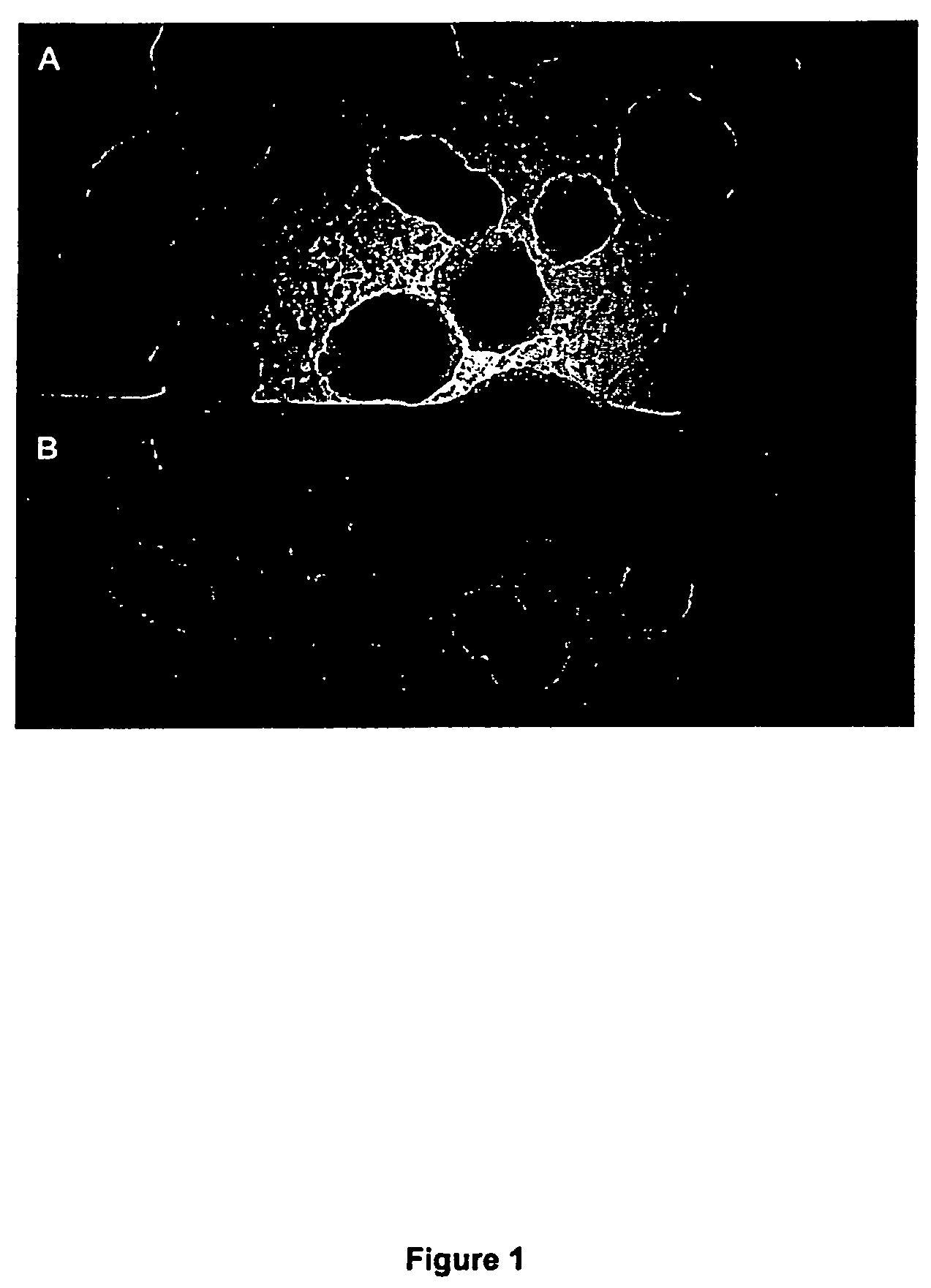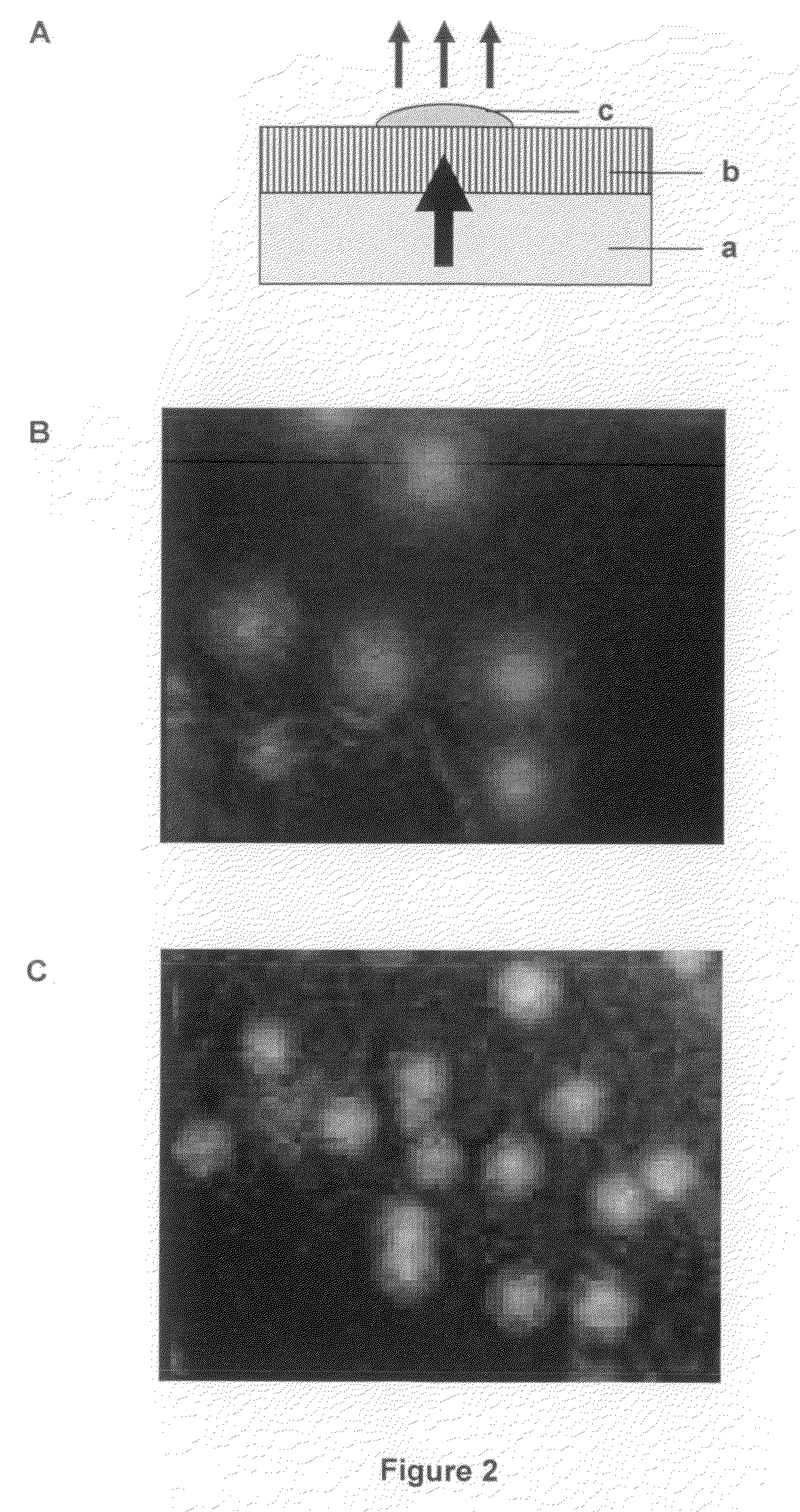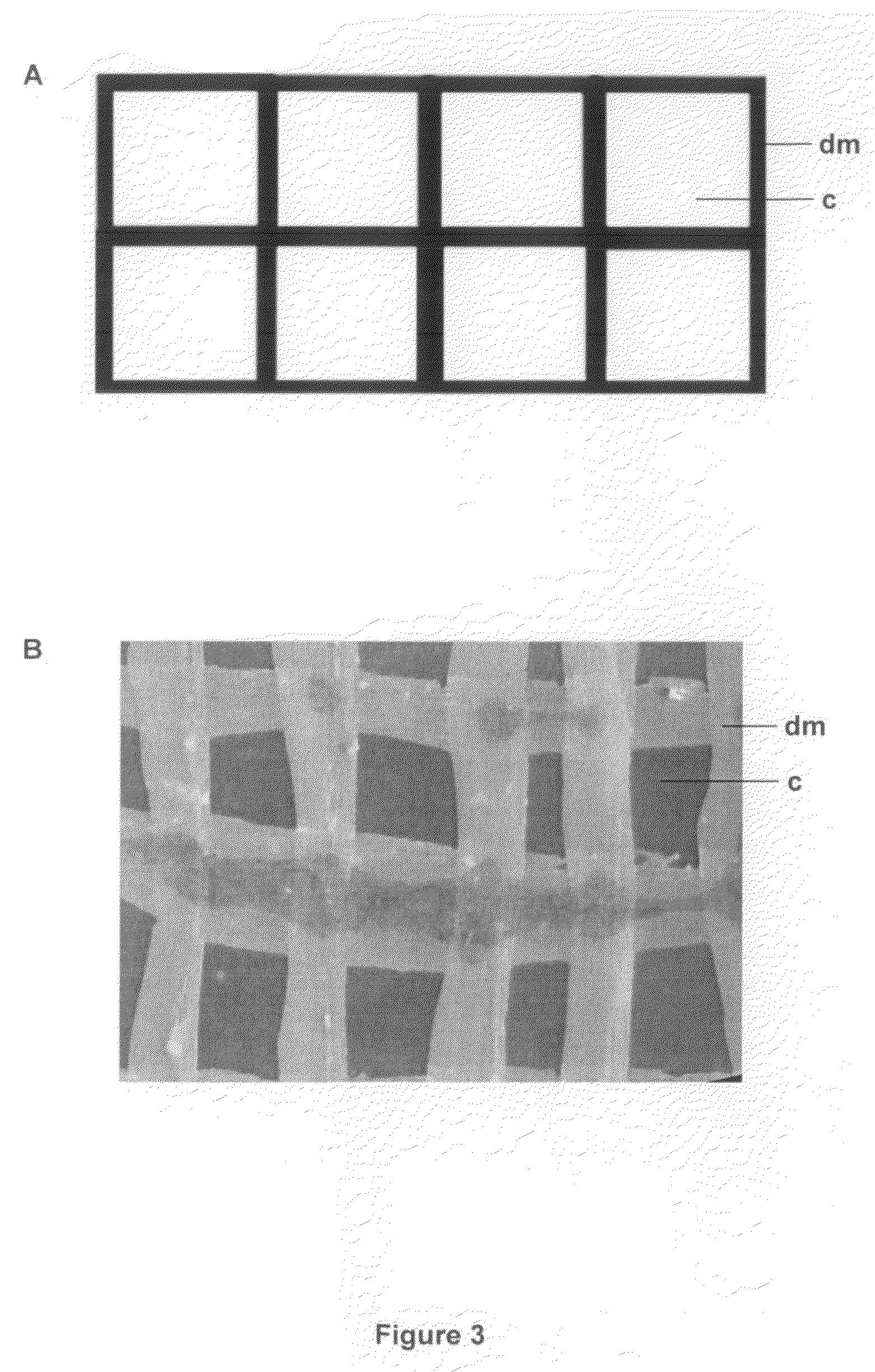Method for high throughput cell-based assays using versatile living microarrays
a microarray and cell-based technology, applied in combinational chemistry, biochemistry apparatus, chemical libraries, etc., can solve the problems of not allowing cells to grow, affecting the biological assay, and requiring cumbersome and time-consuming handling, so as to reduce the volume of reagents and test compounds, increase throughput, and high speed
- Summary
- Abstract
- Description
- Claims
- Application Information
AI Technical Summary
Benefits of technology
Problems solved by technology
Method used
Image
Examples
example 1
Provision of Transformed E. Coli Cells on the Surface of Porous Solid Substrate
[0163]According to the present invention, the surface of the solid substrate may be contacted, by direct deposit thereon, with an inoculum of cellular components.
[0164]Ethanol-sterilized flow-through solid substrate (aluminium-oxide substrate; Anopore, Whatman) was placed on L-agar plates containing 100 μg / ml ampicillin (Sigma). 10 pg of pUC18 plasmid (Sigma) was transformed into XL2 MRF′ competent cells (Stratagene, manufacturers protocols was used except only 20 μl rather than 100 μl competent cells were used per transformation) and then plated on the substrate at different dilutions, then grown for 8 hours at 37° C. and the appearance of ampicillin resistant colonies assessed. Both nutrients and ampicillin reach the bacteria from underneath the substrate through the substrate's pores.
[0165]As shown in FIG. 1B, after 8 hours colonies were slightly smaller on the substrate compared to L-agar and had a re...
example 2
Detection of β-galactosidase Activity from E. coli Cells Growing on the Porous Substrate Using MUG, a Fluorogenic Substrate for this Enzyme
[0167]A sterile flow-through substrate was placed on 2TY plates containing 100 μg / ml ampicillin (Sigma) and 50 μg / ml MUG (4-methylumbelliferyl p-β-galactoside, Sigma, cat: M-1633). 50 μl aliquots of L-broth containing 103 cfu / ml of E. coli XL2 Blue MRF′ with the plasmid pUC18 (expressing β-galactosidase) were plated on the substrate and a similar volume directly on agarose. Controls were performed plating the host strain lacking pUC18 on the same plates (without ampicillin). Conversion of MUG to its fluorescent product (4-methylumbelliferone) was assessed after 8 hours growth by placing the agar plates on a UV transilluminator and capturing the images of fluorescent colonies using a UVP Epi Chemi II CCD camera. FIG. 2A illustrates the experimental set up and FIGS. 2B and 2C show the results obtained on the substrate (2C) or direct on the agar (2B...
example 3
Bacterial Cell Growth on the Surface of a Flow-through Solid Substrate—Sensitivity to Antibiotics Provided from Underneath the Substrate
[0170]200 nl spots of molten 0.5% agar and either 0, 500 μg / ml and 5 mg / ml kanamycin (0, 100 and 1000 ng of kanamycin) were spotted on ethanol-sterilized flow-through substrate to form 1 mm diameter agar plugs through the substrate. The porous nature of the substrate draws the molten agar into the pores by capillary action. These treated substrates were then overlaid with 106 cfu / ml E. coli XL2 MRF′ cells containing plasmid pUC18 that had been grown in 2TY broth with 100 μg / ml ampicillin and placed on 2TY plates with the same concentration of ampicillin. Plates were then incubated for 12 hours at 37° C. The results are shown in Table 1.
[0171]In conclusion, this experiment shows that antibiotic sensitivity can be tested on a micro scale by printing agar plugs containing an antibiotic on the porous substrate. The living array according to the present ...
PUM
| Property | Measurement | Unit |
|---|---|---|
| width | aaaaa | aaaaa |
| volume | aaaaa | aaaaa |
| concentration | aaaaa | aaaaa |
Abstract
Description
Claims
Application Information
 Login to View More
Login to View More - R&D
- Intellectual Property
- Life Sciences
- Materials
- Tech Scout
- Unparalleled Data Quality
- Higher Quality Content
- 60% Fewer Hallucinations
Browse by: Latest US Patents, China's latest patents, Technical Efficacy Thesaurus, Application Domain, Technology Topic, Popular Technical Reports.
© 2025 PatSnap. All rights reserved.Legal|Privacy policy|Modern Slavery Act Transparency Statement|Sitemap|About US| Contact US: help@patsnap.com



